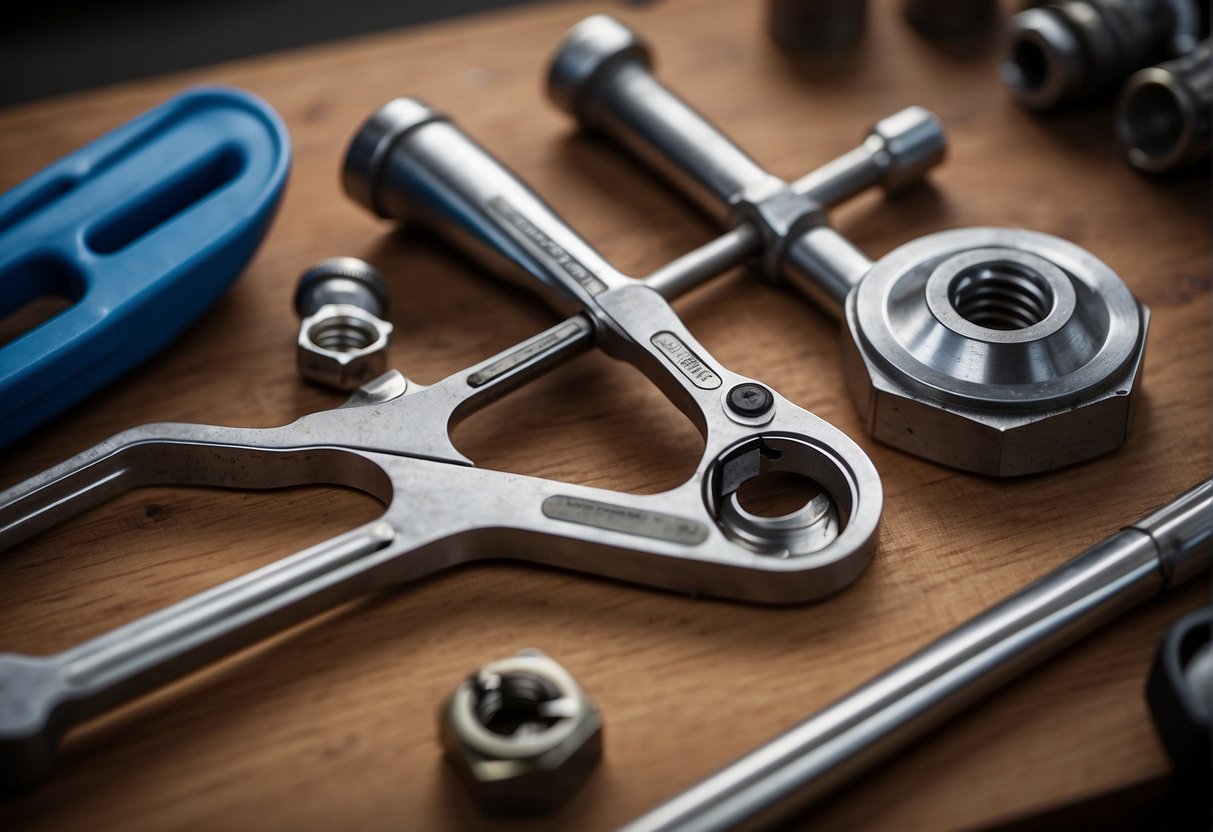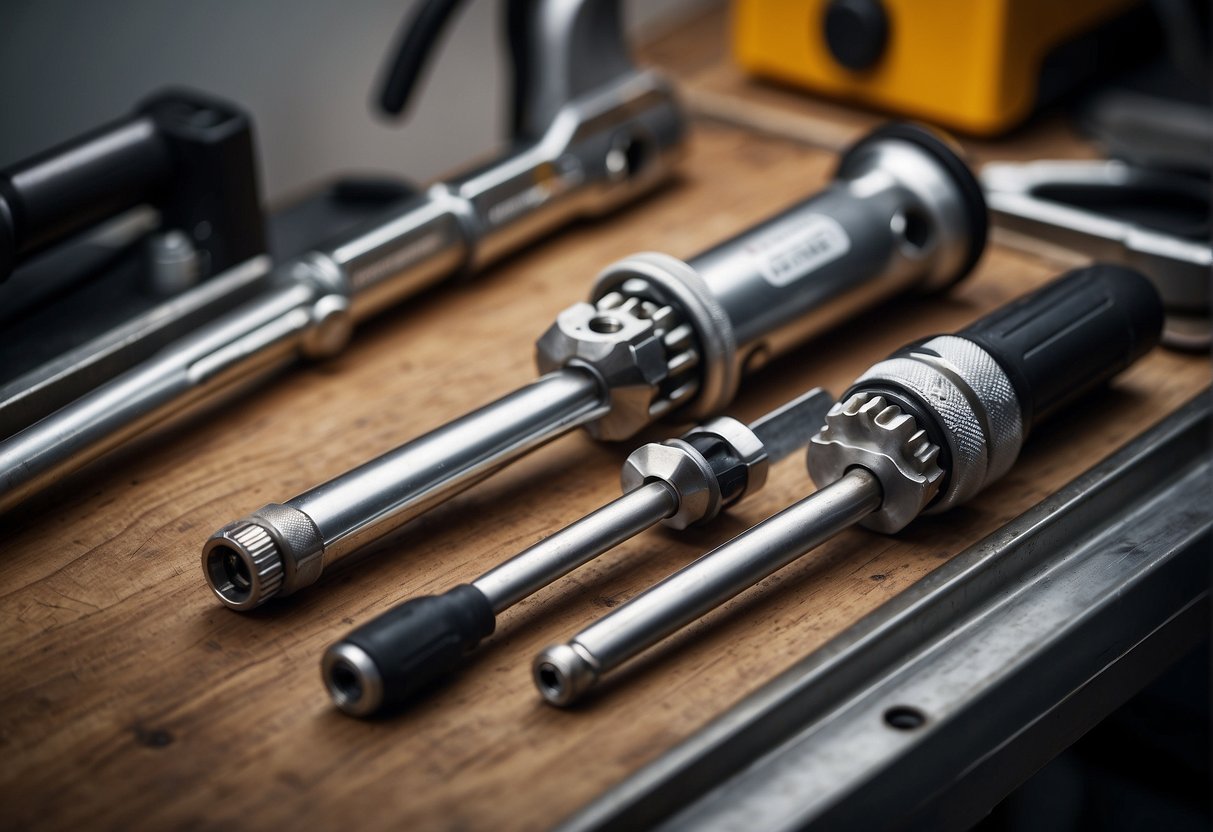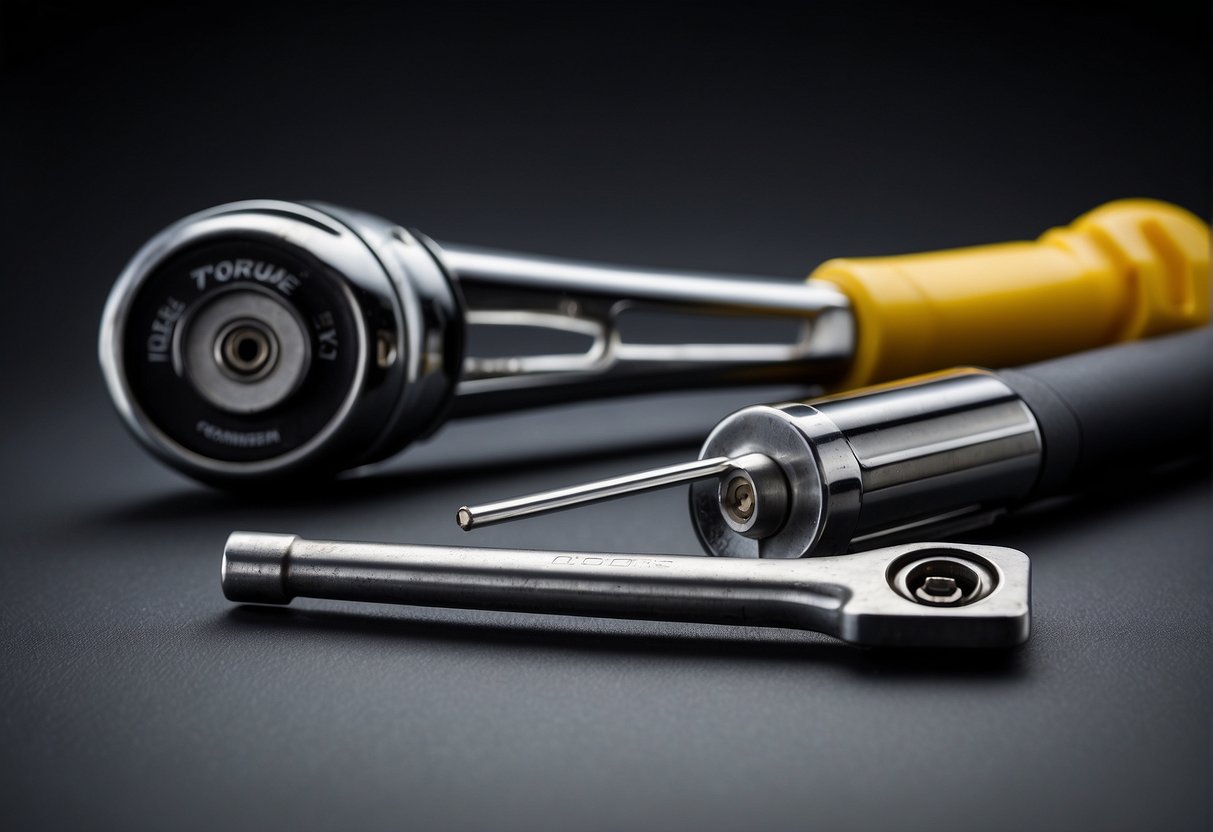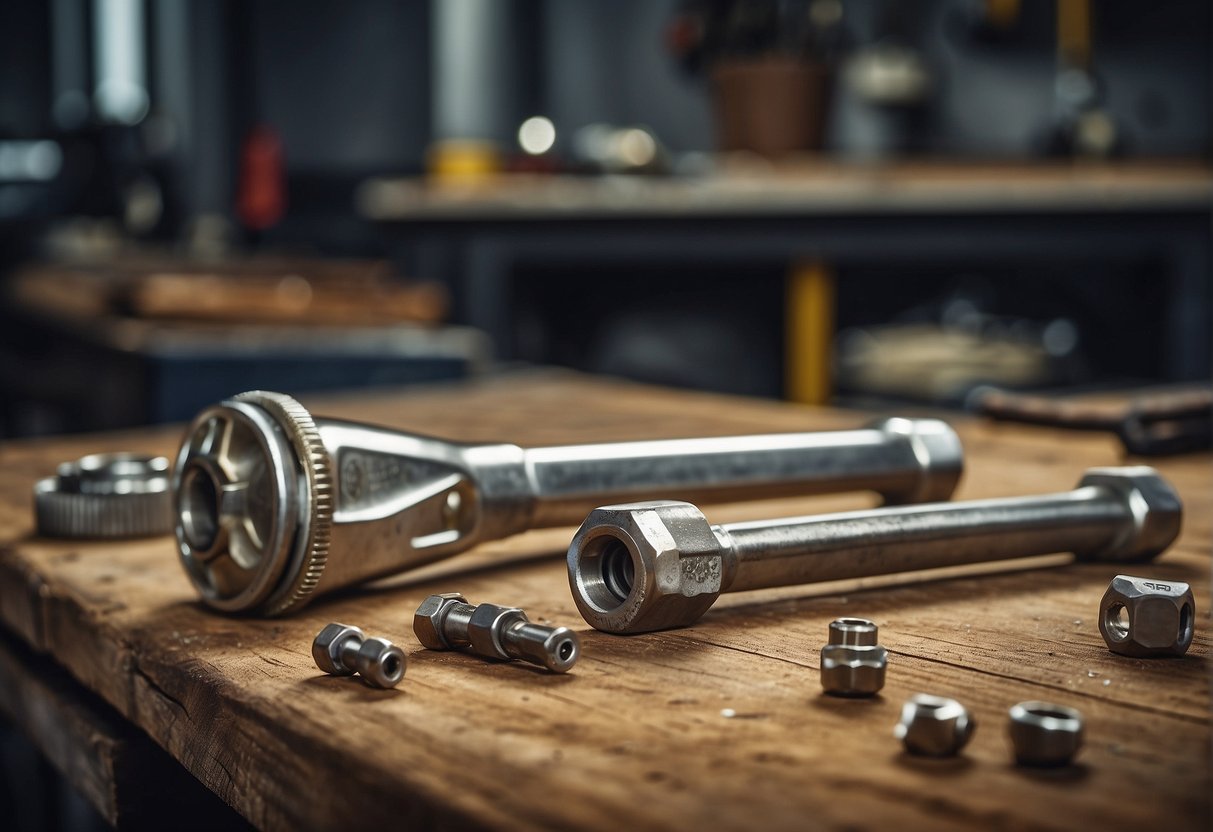When it comes to tightening bolts or nuts, you need a reliable tool that can apply the right amount of force. Two of the most common tools for this job are the torque wrench and the socket wrench. But what are the differences between them, and which one is right for your needs?
A torque wrench is a tool that applies a specific amount of force, or torque, to a bolt or nut. This is important in applications where precise torque is required, such as in automotive work or other mechanical applications. A socket wrench, on the other hand, is a tool that is used to tighten or loosen bolts or nuts. It typically has a ratcheting mechanism that allows you to turn the wrench without having to remove it from the bolt or nut.
Understanding the differences between these two tools is important if you want to choose the right one for your needs. Factors such as precision, calibration, and cost can all play a role in your decision. In this article, we’ll take a closer look at torque wrenches vs socket wrenches to help you make an informed choice.
Key Takeaways
- Torque wrenches apply a specific amount of force, while socket wrenches are used to tighten or loosen bolts or nuts.
- Precision and calibration are important factors to consider when choosing between these two tools.
- Torque wrenches are typically more expensive than socket wrenches, but they offer greater accuracy in torque application.
Understanding Torque and Socket Wrenches
As someone who has worked with various mechanical devices, I have come to understand the importance of having the right tools for the job. Two of the most commonly used tools in mechanical work are torque wrenches and socket wrenches. In this section, I will provide an overview of the design and functionality of these tools, as well as the different types available.
Design and Functionality
A torque wrench is a tool used to apply a specific amount of torque to a fastener such as a bolt or nut. The tool is designed to prevent over-tightening or under-tightening, which can lead to damage or failure of the fastener. Torque wrenches come in different types, including digital, beam, dial, micrometer, and click torque wrenches.
On the other hand, a socket wrench is a tool used to tighten or loosen nuts and bolts. It consists of a handle and a socket that fits over the nut or bolt head. Socket wrenches come in different types, including ratchet wrenches and socket wrench sets.
Types of Torque Wrenches
Digital torque wrenches are electronic devices that display the torque being applied in real-time. They are typically more expensive than other types of torque wrenches but offer greater accuracy and precision.
Beam torque wrenches are the simplest type of torque wrench. They have a long beam with a pointer that moves along a calibrated scale to indicate the torque being applied. They are relatively inexpensive and easy to use but may not be as accurate as other types.
Dial torque wrenches are similar to beam torque wrenches but have a dial instead of a pointer to indicate the torque being applied. They are more accurate than beam torque wrenches and easier to read.
Micrometer torque wrenches are the most accurate type of torque wrench. They have a micrometer-style scale that allows for precise and repeatable torque settings. They are typically used in applications where accuracy is critical.
Click torque wrenches are the most commonly used type of torque wrench. They have a mechanism that produces an audible “click” when the preset torque is reached, indicating that the fastener is properly tightened. They are easy to use and relatively inexpensive.
Types of Socket Wrenches
Ratchet wrenches are the most commonly used type of socket wrench. They have a ratcheting mechanism that allows the user to tighten or loosen a fastener without having to remove the wrench from the nut or bolt head. They come in different sizes and are available in both metric and standard measurements.
Socket wrench sets are a collection of sockets of different sizes that can be used with a handle or ratchet wrench. They are available in both metric and standard measurements and are ideal for working with a variety of fasteners.
In conclusion, understanding the design and functionality of torque and socket wrenches, as well as the different types available, is essential for any mechanic or DIY enthusiast. By selecting the right tool for the job, you can ensure that your work is done efficiently, accurately, and safely.
Applications and Use Cases
As a professional or DIY enthusiast, you need to know the right tool for the job. Torque wrenches and socket wrenches are essential tools for assembling, fastening, and tightening bolts and nuts. They have different features and distinct usage that make them suitable for different applications. In this section, I will discuss the applications and use cases for torque wrenches and socket wrenches.
Automotive Repair
Torque wrenches are commonly used in automotive repair to tighten bolts and nuts to the manufacturer’s specifications. They are essential for ensuring the safety and reliability of vehicles. For example, when changing the tires, you need to use a torque wrench to tighten the lug nuts to the recommended torque. Failure to use a torque wrench can result in overtightening or undertightening the lug nuts, which can lead to accidents or damage to the wheel studs.
Socket wrenches are also used in automotive repair for removing and tightening bolts and nuts. They are versatile and allow for quick fastening and loosening of bolts and nuts. For example, when removing the oil drain plug, you can use a socket wrench to quickly remove the plug.
Machinery and Construction
In machinery and construction, torque wrenches are used to tighten bolts and nuts to specific torque values. They are essential for ensuring that the machinery and construction structures are safe and reliable. For example, when assembling an aircraft, torque wrenches are used to tighten the bolts to the recommended torque values. Failure to use a torque wrench can result in the bolts being undertightened or overtightened, which can compromise the safety of the aircraft.
Socket wrenches are also used in machinery and construction for removing and tightening bolts and nuts. They are versatile and allow for quick fastening and loosening of bolts and nuts. For example, when assembling a metal structure, you can use a socket wrench to quickly tighten the bolts.
DIY and Home Use
Torque wrenches and socket wrenches are also useful tools for DIY and home use. They are essential for various tasks, such as changing the oil in your car, assembling furniture, and fixing appliances. For example, when assembling furniture, you can use a socket wrench to tighten the bolts quickly. When changing the oil in your car, you can use a torque wrench to tighten the drain plug to the recommended torque.
In conclusion, torque wrenches and socket wrenches are essential tools for various applications, including automotive repair, machinery and construction, and DIY and home use. Understanding the applications and use cases for these tools can help you choose the right tool for the job.
Precision and Calibration
Accuracy in Torque Measurement
When it comes to precision and accuracy in torque measurement, torque wrenches are the clear winner over socket wrenches. Torque wrenches are designed to deliver a specific level of torque to a fastener, ensuring that it is tightened to the exact specifications required. Socket wrenches, on the other hand, rely on the user’s feel and judgment to determine how much torque is being applied. This can lead to over-tightening or under-tightening, which can cause damage to the equipment or even injury to the individual using the wrench.
Calibration Process
To ensure accurate torque measurement, torque wrenches must be calibrated regularly. Calibration involves comparing the readings of the wrench to a known standard and making any necessary adjustments to bring the wrench back into spec. The calibration process can be done using a calibration device, such as a torque analyzer or torque sensor, or by sending the wrench to a calibration lab for professional calibration.
It is important to note that torque wrenches can lose accuracy over time, especially if they are used frequently or subjected to harsh conditions. Regular calibration can help to ensure that the wrench is delivering accurate torque measurement and meeting the required torque requirements.
In conclusion, when it comes to precision and calibration, torque wrenches are the clear winner over socket wrenches. They provide accurate torque measurement and can be calibrated regularly to ensure that they are meeting the required torque specifications.
Advantages and Limitations
Torque Wrench Benefits
When it comes to tightening fasteners, a torque wrench provides precise torque application, preventing over-tightening and damage. This is especially important in applications where over-tightening or under-tightening can lead to mechanical failure or damage. One of the main advantages of using a torque wrench is that it helps prevent damage to fasteners and components by ensuring that they are tightened to the correct torque value. This can help ensure safety and reliability.
Another unique advantage of the torque wrench is that it ensures consistency and accuracy when tightening fasteners. This can help prevent damage to parts and ensure safety. However, there are also some disadvantages, such as the cost and the need for calibration. Torque wrenches can be expensive and require calibration to maintain their accuracy.
Socket Wrench Benefits
A socket wrench is highly versatile, accommodating various fastening tasks with ease of use and accessibility. It is a valuable tool in any mechanic’s toolbox and can be used for a variety of applications. It is also an efficient tool, allowing for quick and easy tightening or loosening of fasteners. Socket wrenches have a high working speed and can be used to complete tasks quickly.
However, socket wrenches have limited torque control, which can lead to over-tightening or stripping bolts. This can cause damage to fasteners and components, leading to mechanical failure or damage. Socket wrenches do not provide the same level of precision as torque wrenches, which can be a disadvantage in some applications.
Considerations for Wrench Selection
When selecting a wrench, it is important to consider the specific application and the requirements of the job. Torque wrenches are ideal for applications where precision and accuracy are essential, and where over-tightening or under-tightening can lead to mechanical failure or damage. Socket wrenches are ideal for applications where versatility and efficiency are important, and where torque control is not as critical.
It is also important to consider the comfort of the user when selecting a wrench. Torque wrenches can be heavy and require more effort to use, while socket wrenches are generally lighter and easier to use. The choice between a torque wrench and a socket wrench ultimately depends on the specific needs of the user and the requirements of the job.
Maintenance and Care
As with any tool, proper maintenance and care are essential to ensure that your torque wrench or socket wrench remains reliable and durable. In this section, I will discuss some best practices for handling, storing, and checking your wrenches.
Proper Handling and Storage
When handling your wrenches, it is important to avoid dropping or otherwise damaging them. Dropping a torque wrench, in particular, can cause it to go out of calibration, which can compromise its reliability. Be sure to store your wrenches in a dry, clean place, away from sources of heat or moisture. If you have a digital torque wrench, be sure to remove the batteries before storing it for an extended period.
Routine Checks and Calibration
To ensure that your wrenches remain accurate and reliable, it is important to perform routine checks and calibration. For torque wrenches, this means checking the calibration against a known standard and adjusting it if necessary. For socket wrenches, you should periodically check the tightness of the jaws and lubricate the moving parts.
It is also important to check for damage, such as cracks or chips in the handle or head. If you notice any damage, you should have the wrench repaired or replaced. Regular maintenance and care can help extend the life of your wrenches and ensure that they remain accurate and reliable for years to come.
In conclusion, proper maintenance and care are essential for keeping your torque wrenches and socket wrenches in good working condition. By following these best practices for handling, storing, and checking your wrenches, you can help ensure their reliability and durability.
Frequently Asked Questions
What are the main differences between a torque wrench and a socket wrench?
A torque wrench and a socket wrench may look similar, but they have different functionalities. A torque wrench is designed to tighten bolts and nuts to a specific level of torque, while a socket wrench is used for turning nuts and bolts. Torque wrenches are often used in applications where accuracy is critical, such as automotive and aerospace industries, while socket wrenches are more versatile and can be used in a wide range of applications.
Can a torque wrench be used for the same applications as a socket wrench?
While a torque wrench can be used for some of the same applications as a socket wrench, it is not as versatile as a socket wrench. A torque wrench is designed to provide precise torque levels, which makes it ideal for applications where accuracy is critical. Socket wrenches, on the other hand, are more versatile and can be used for a wider range of applications.
How does a ratchet wrench differ from a socket wrench in functionality?
A ratchet wrench is a type of socket wrench that has a ratcheting mechanism. This mechanism allows the user to turn the wrench in one direction while keeping the socket in place, which makes it easier to use in tight spaces. A socket wrench, on the other hand, does not have a ratcheting mechanism and requires the user to remove the wrench after each turn.
When should a torque wrench be used instead of a standard ratchet or socket wrench?
A torque wrench should be used when accuracy is critical, such as in automotive and aerospace applications. In these industries, over-tightening or under-tightening can lead to serious safety issues. A standard ratchet or socket wrench can be used for applications where accuracy is not as critical.
What are the advantages of using a torque wrench over an adjustable wrench?
A torque wrench provides more accurate torque readings than an adjustable wrench. This makes it ideal for applications where accuracy is critical, such as in automotive and aerospace industries. An adjustable wrench, on the other hand, is more versatile and can be used in a wider range of applications.
In what scenarios is a socket wrench preferred over a torque wrench?
A socket wrench is preferred over a torque wrench in applications where accuracy is not critical. Socket wrenches are more versatile and can be used in a wide range of applications, while torque wrenches are designed for specific applications where accuracy is critical.

Hi, I’m Sal Muller of Tooltrip.com. My DIY experience led me to understand essential power tools for home projects. Tooltrip.com guides enthusiasts and professionals in choosing right tools for any job. I provide concise top tool reviews for easier, efficient DIY.





